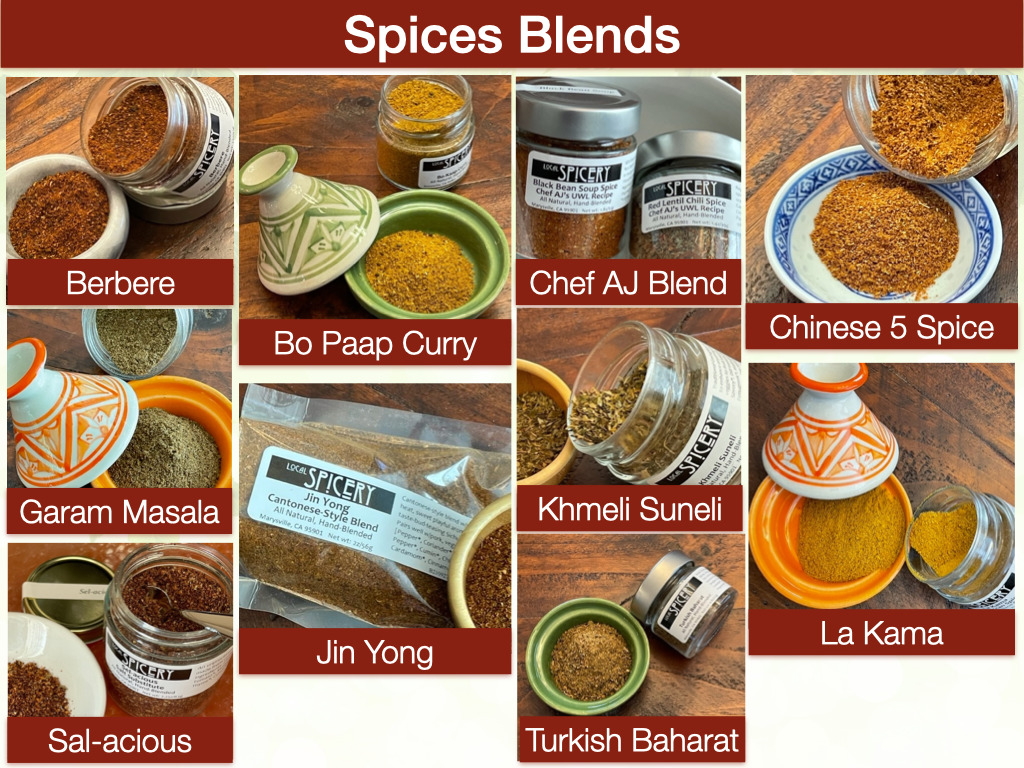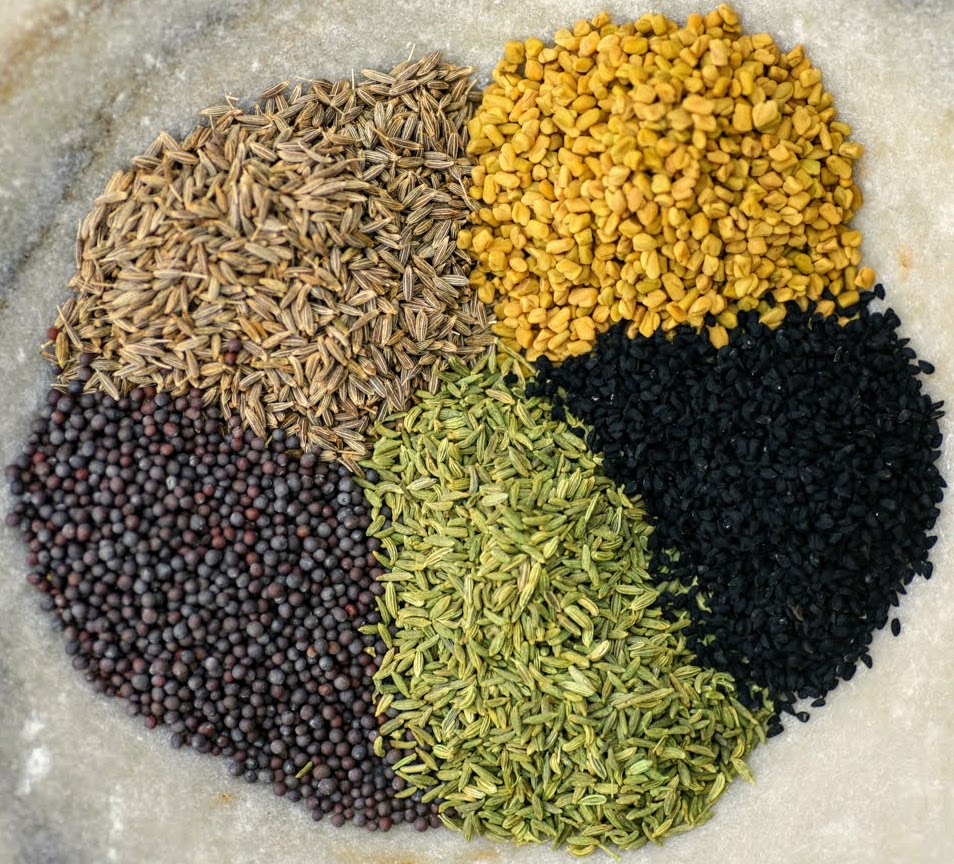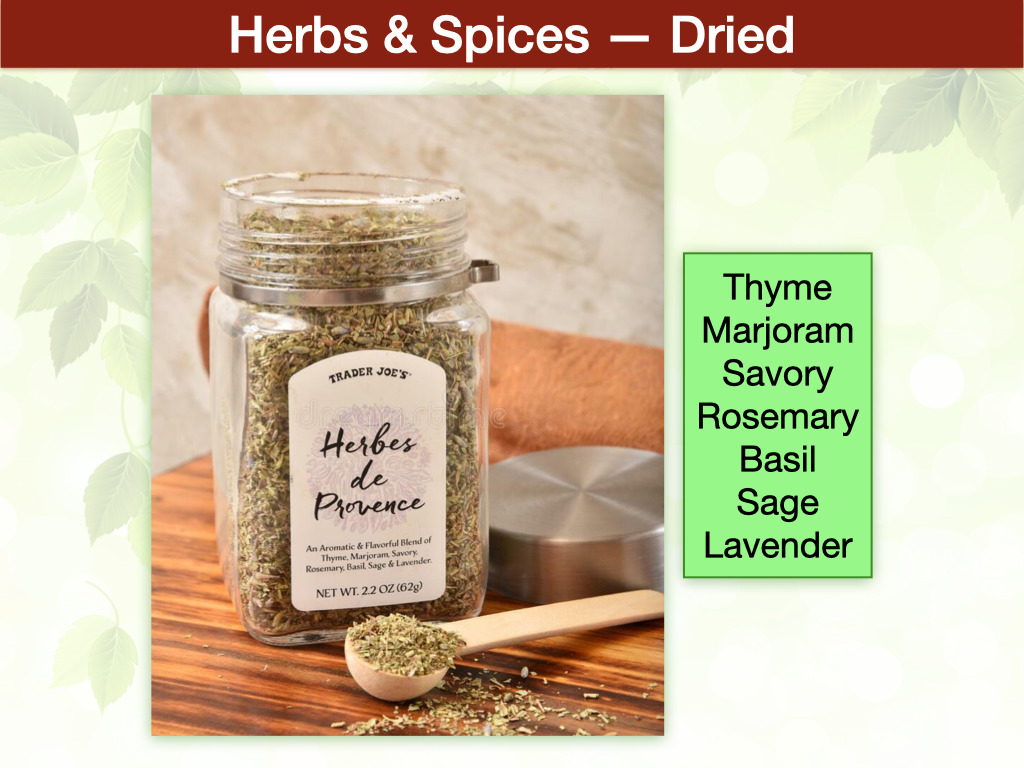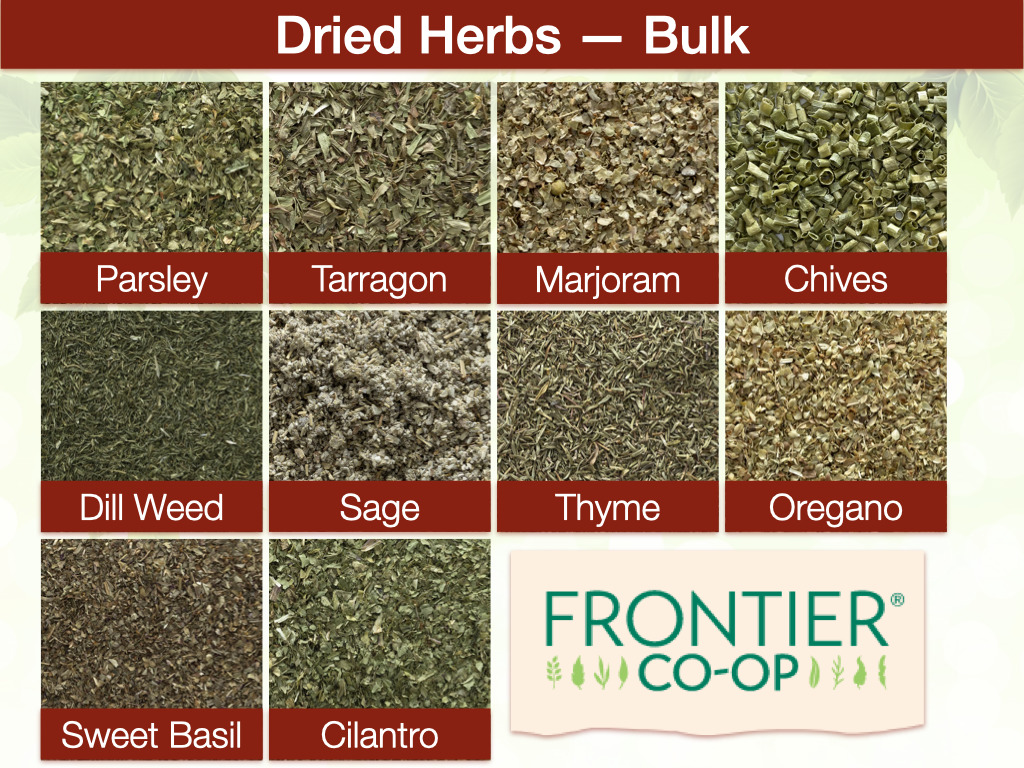Get Started! How To Make? — A Simple Salad — A Richer Salad — A Baroque Salad!
Ingredients: (1) Leafy Greens, (2) Fruits & Berries, (3) Rainbow Veggies, (4) Herbs & Spices, (5) Lime, Lemon & Vinegar, (6) Beans for Salad, (7) Starch Rich Ingredients for Salad: Plantains, Tubers, and Whole Grains, (8) Dressings, Chutneys, Relishes & Salsa.
Herbs & spices are amazing flavor enhancers! I add them regularly to daily salads. We are lucky to have so many choices in the world today! Generally speaking, I invest in spice mixes instead of individual spices. For the kind of preparations I make, any well known spice mix from any part of the world seems to suffice :)
Where do I buy spice mixes from?
(A) Penzey's: For me, it was a joy to visit Penzey's in Menlo Park, California and smell fresh spices! Check out their collection of Salt-Free Spice Mixes. We can also order online.
(B) Local Spicery: I like spice mixes by Local Spicery in Tiburon: SOS-Free Spice Collection. Turns out that the owners of Local Spicery adopted a Whole Food Plant-Based SOS-Free lifestyle! Nice!
What to buy at Local Spicery? They have "sort by popularity" filter! Check out SOS-Free Spices (sorted by popularity).
I'm not a fan of hot mixes with chillies. I prefer mildly spicy & mellow spice mixes. Generally speaking, I gravitated towards Mediterranean & African spice mixes. Here are a few: Bo Kaap is close to Indian flavors. Ras El Hanout was nice. Not sure if I tried La Kama or not; it looks interesting. Turkish Baharat, Hestia, Khmeli Suneli were pretty awesome! Rajkot Chaat seems interesting — Rajkot is a city in India; 'chaat' is a comfort food sold often as street food.
Sel-acious by Local Spicery: An interesting salt substitute has been developed by Local Spicery: Sel-acious. The ingredients are Sumac, Onion, Tomato, Mustard, Kombu, Thyme, and Cumin. Personally, I think Dulse instead of Kombu will also be awesome — both provide us iodine and will add flavor too. We can assemble such a mixture at home ourselves (but I don't know the relative ratios of these ingredients). Sumac is a tart spice (ground sumac berries) available in all Mediterranean stores; it's very tasty by itself. Dulse can be bought from Amazon. Tomato flakes make recipes amazing. I once bought them from Azure.
(C) Local Stores: Local stores often have salt-free spice mixes. I like chimichurri seasoning in particular :)
(D) Pancha Phoron: A specific seed mixture that's both nutrition rich and flavorful is Pancha Phoron: A 5-Spice Blend from India. It has five seeds: cumin seeds ('jeera'), fenugreek seeds ('methi seeds'), black cumin seeds ('kalonji'), fennel seeds ('saunf') and mustard seeds ('rai'), mixed in 1:1:1:1:1 proportion. Pancha Phoron is traditionally used for preparing 'tadka' (tempering of these seeds in oil) or the seeds are roasted and gorund to make 'bhuna hua masala'. How do I use Pancha Phoron? I just grind these seeds together and store them in a fridge, and use them with raw salad preparations.
Tart spices: In addition to lime-lemon-vinegar, I always have some tart spices at home: sumac, anardana (pomegranate powder), amchoor (mango powder), lemon-pepper, dried lemon peels, and so on. Rhubarb (a stem veggie) is also tart.
Several interesting combinations are available in the market. My favorite is Herbs de Provence, available in Trader Joe's and at Amazon.
Additional dried herb mixes are available at Local Spicery. Check out their SOS-Free mixes. We can order them online.
Fresh herbs are amazing! But mincing them takes a few mins. Any combination of mint, cilantro, curry leaves & basil. I developed a taste for parsley too.
Fresh herbs are far more aromatic and flavorful than dried herbs. However, it takes some time to clean and mince fresh herbs. When I'm in a hurry, I use dried herbs. A popular combination of dried herbs is Herbs de Provence.
Which fresh herbs? I add whatever I find in the market. Cilantro, mint, basil are commonly found in grocery stores. Dill and parsley are also common. In Asian stores, I am able to find curry leaves, Thai basil, tarragon, perilla leaves and many other fresh herbs. We can even grow them at home.
Iodine sources: For salt-free lifestyle, good sources of iodine are sea veggies like dulse, nori, arame, wakame. I found dulse to be flavorful - 1-2 tsp daily goes well with such a salad. Dulse is like a special spice of sorts.
Dulse flakes are derived from seaweed. They are iodine rich and add an interesting flavor to salads. I like them. When we follow an SOS-Free food system, seaweed like dulse flakes provide us iodine. See Iodine Sources for details. Nori flakes might also taste okay.
Lime-lemon: I prefer Meyer lemons coz we can eat their skins too. Edible skins of plant foods like fruits, veggies, whole grains, beans are packed with micronutrients (vitamins, minerals, phytochemicals — exactly the stuff that AICR guidelines highlight for cancer protection).
Flavored vinegars: We can visit many shops (Trader Joe's has a couple of options: balsamic & pomegranate). But a large collection is available at California Balsamic: https://californiabalsamic.com/product-category/balsamic/
Berries: I add these to my morning b'fast but we can add them to salads too. Will share a link below for where to buy fresh, frozen, dried, powdered berries. We can collect almost 10-12 berries at home and try them out in different combinations. They are like herbs & spices in the sense that they introduce amazing flavor into salads.
Nutritional yeast is interesting. Check out articles in the Yeast section. I generally avoid nutritional yeast because people with certain medical conditions should stay away from them. See Nutritional Yeast & Autoimmune Conditions for details. Even though I don't have such a condition, I prefer to avoid nutritional yeast so that I can serve salads I prepare to everybody.
Salt-free mustard: See Stone Ground Mustard by Organicville and Westbrae Stoneground Mustard — neither has added salt. Can we make such mustard at home? Yes! It's actually straightforward. See Mustard Dressings.
(1) Dry spice mixes: I prefer to buy dry spice mixes like those listed above instead of individual spices.
(2) Tart spices: I make sure that I have 3-4 tart spices at home — lemon pepper, lemon peels, 'anardana' (pomegranate powder), 'amchoor' (mango powder), sumac (a high antioxidant spice), …
(3) Dried herb mixes: I buy Herbs de Provence (a 7-herb mixture) in large quantities. I've grown fond of it.
(4) Fresh herbs: Keep buying fresh herbs every week: basil, cilantro, mint, parsley, …
(5) Misc: I buy specific liquid spice mixes like 'salt-free mustard' (Dr Greger is okay with miso too but I don't use it coz it has salt). We can make salt-free mustard at home easily.
(6) Seeds: I make my own 5-spice mix called Pancha Phoron - all 5 seeds are known to have amazing properties: cumin, black cumin, mustard, fenugreek, fennel.
(7) Lime & lemon: I keep buying fresh lime & lemon. I love Meyers lemons because we can eat them with their skins!
(8) Flavored vinegars: Pretty awesome! They last many months.
(9) Berries: For great flavor, we can invest in several berries: see Berries: Where to Buy in USA? They are so tasty - some are tart, some are sweet. Hydrate 1-2 tbsp overnight; by morning, we have an interesting jam-like preparation (sweet-n-sour). Use them in breakfast or salads or sandwiches or soups!

 Instagram
Instagram YouTube
YouTube



